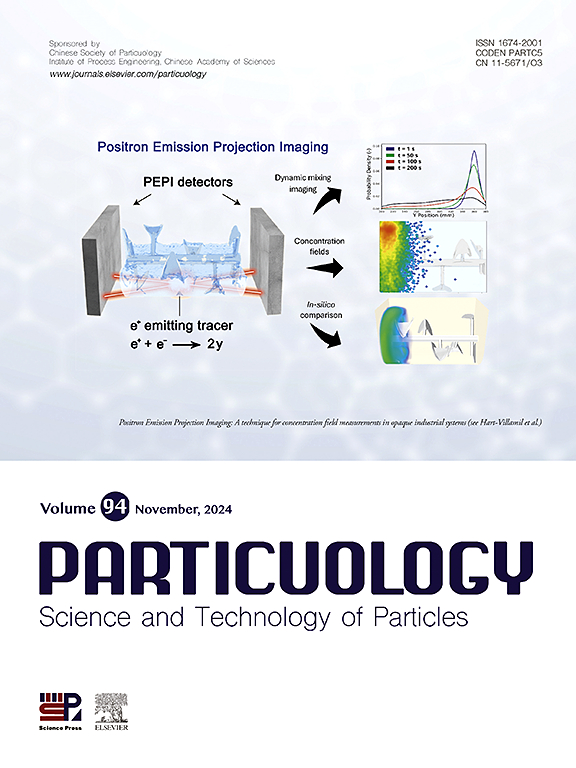Calibration of DEM input parameters for simulation of the cohesive materials: Comparison of response surface method and machine learning models
IF 4.1
2区 材料科学
Q2 ENGINEERING, CHEMICAL
引用次数: 0
Abstract
This paper presents a methodology for calibrating discrete element method input parameters for simulating cohesive materials. The Plackett-Burman method was initially employed to identify the significant input parameters. Subsequently, the performances of response surface methodology (RSM), artificial neural networks (ANN), and random forest (RF) models for calibration were compared. The results demonstrated that the random forest model outperformed the two other models, achieving an RMSE of 1.89, an R-squared of 94 %, and an MAE of 1.63. The ANN model followed closely, with an RMSE of 3.12, an R-squared of 89 %, and an MAE of 2.18, while the RSM model exhibited lower performance with an RMSE of 6.84, an R-squared of 86 %, and an MAE of 5.41. This study presents a framework for enhancing the accuracy of DEM simulations. Finally, the robustness and adaptability of the calibration approach were demonstrated by applying calibrated parameters from one particle size to another.

黏性材料模拟DEM输入参数的标定:响应面法与机器学习模型的比较
本文提出了一种用于模拟粘性材料的离散元法输入参数的标定方法。最初采用Plackett-Burman方法来识别重要的输入参数。随后,比较了响应面法(RSM)、人工神经网络(ANN)和随机森林(RF)模型的标定性能。结果表明,随机森林模型优于其他两种模型,RMSE为1.89,r²为94%,MAE为1.63。ANN模型紧随其后,RMSE为3.12,r平方为89%,MAE为2.18,而RSM模型的RMSE为6.84,r平方为86%,MAE为5.41,表现较差。本研究提出了一个提高DEM模拟精度的框架。最后,通过将一种粒径的标定参数应用于另一种粒径,验证了标定方法的鲁棒性和适应性。
本文章由计算机程序翻译,如有差异,请以英文原文为准。
求助全文
约1分钟内获得全文
求助全文
来源期刊

Particuology
工程技术-材料科学:综合
CiteScore
6.70
自引率
2.90%
发文量
1730
审稿时长
32 days
期刊介绍:
The word ‘particuology’ was coined to parallel the discipline for the science and technology of particles.
Particuology is an interdisciplinary journal that publishes frontier research articles and critical reviews on the discovery, formulation and engineering of particulate materials, processes and systems. It especially welcomes contributions utilising advanced theoretical, modelling and measurement methods to enable the discovery and creation of new particulate materials, and the manufacturing of functional particulate-based products, such as sensors.
Papers are handled by Thematic Editors who oversee contributions from specific subject fields. These fields are classified into: Particle Synthesis and Modification; Particle Characterization and Measurement; Granular Systems and Bulk Solids Technology; Fluidization and Particle-Fluid Systems; Aerosols; and Applications of Particle Technology.
Key topics concerning the creation and processing of particulates include:
-Modelling and simulation of particle formation, collective behaviour of particles and systems for particle production over a broad spectrum of length scales
-Mining of experimental data for particle synthesis and surface properties to facilitate the creation of new materials and processes
-Particle design and preparation including controlled response and sensing functionalities in formation, delivery systems and biological systems, etc.
-Experimental and computational methods for visualization and analysis of particulate system.
These topics are broadly relevant to the production of materials, pharmaceuticals and food, and to the conversion of energy resources to fuels and protection of the environment.
 求助内容:
求助内容: 应助结果提醒方式:
应助结果提醒方式:


